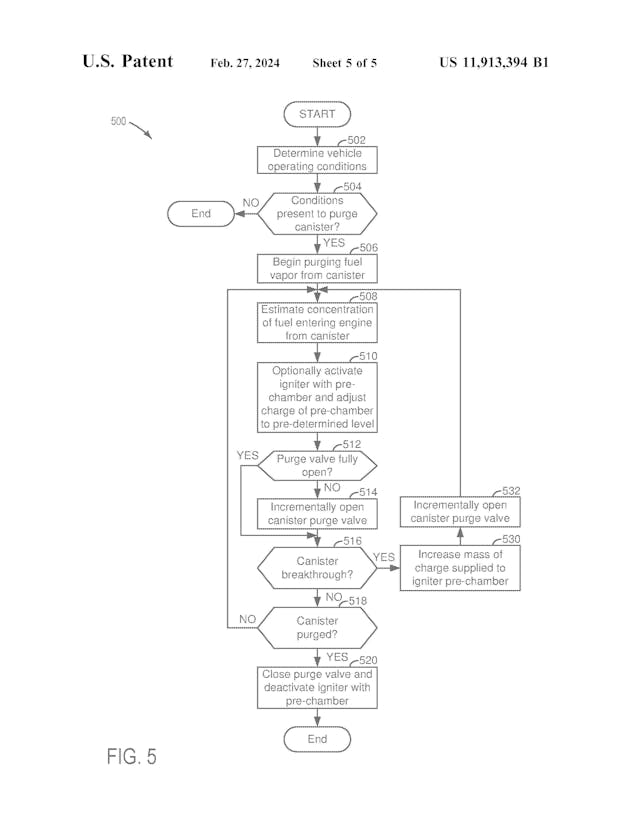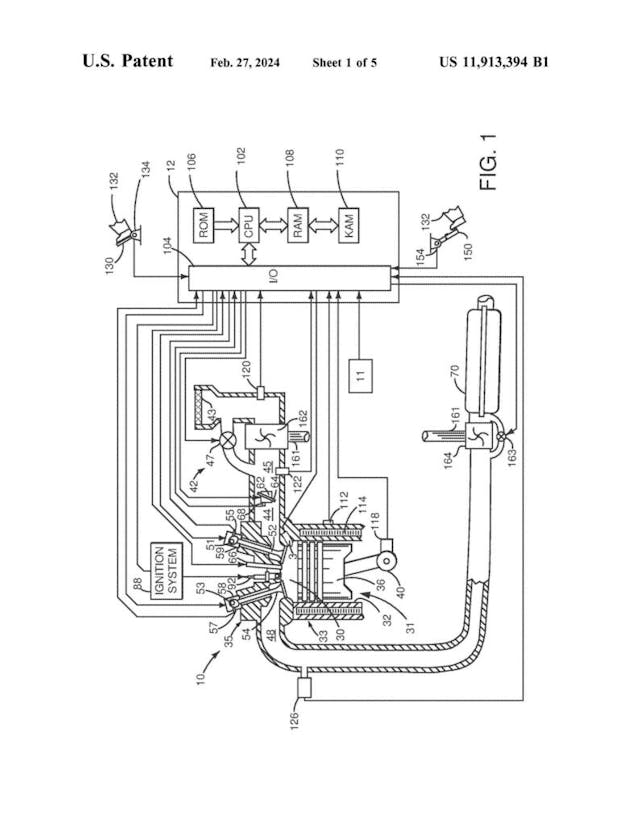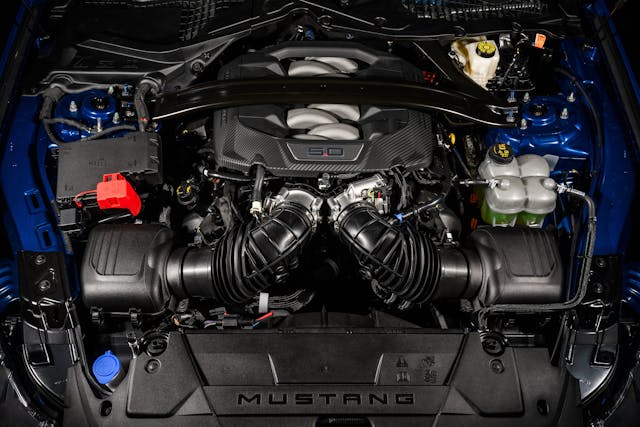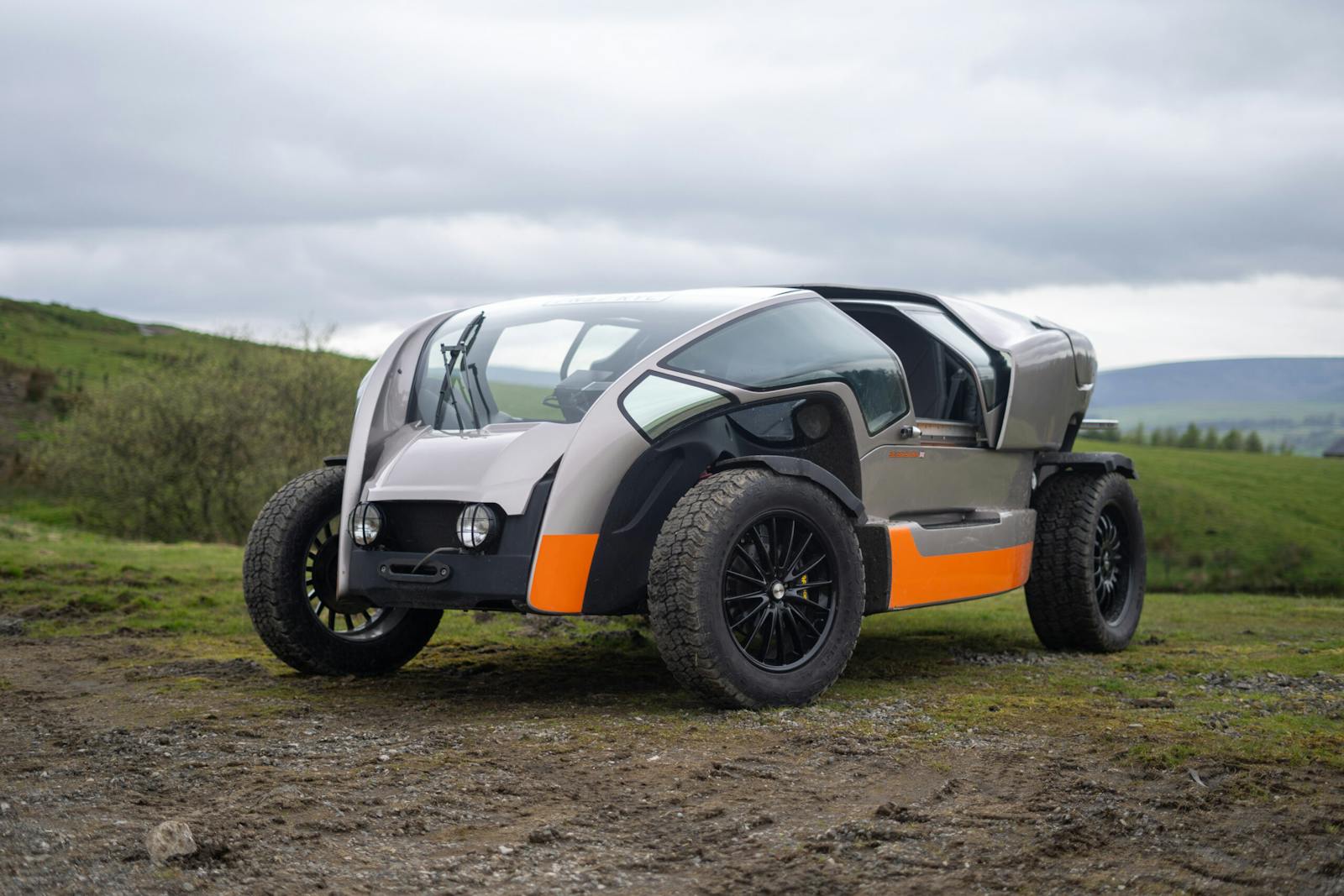Ford Patents Potential ICE-Saving Technology
Engineers at Ford have filed a patent for a pre-combustion system that could dramatically reduce emissions and, as a result, earn a reprieve for gas-powered cars in an era of on-going electrification.
You might want to grab a coffee at this point as it’s going to get pretty technical. The idea is to take the gases captured by a positive crankcase ventilation system, or other evaporative emissions system, and cycle them into a pre-combustion chamber, instead of storing them in a carbon-filled canister, and periodically purging back into the intake, as is convention.
In traditional PCV systems the rate at which emissions are generated can sometimes exceed the purge rate and, when this happens, the gases are vented to the atmosphere, which rather defeats the object of the exercise. The Ford system makes much better use of any unburnt fuel coming through by channeling the vapors into a pre-chamber with an igniter.
“In particular, the approach may reduce an amount of time it takes to purge a carbon filled canister of fuel vapors,” reads the filing with the United States Patent and Trademark Office, first reported on by CarBuzz. “Additionally, the approach may improve combustion stability during purging of fuel vapors. Further, the approach may reduce evaporative emissions by increasing fuel vapor flow during conditions of hydrocarbon breakthrough of the carbon filled canister.”


Overall the system could lead to a more efficient fuel burn, potentially increasing power as well as reducing emissions. As an added benefit the buildup of carbon deposits on valves from unburnt fuel would also be reduced, improving engine longevity.
Obviously it’s early days and the system could prove too complex and expensive to manufacture, especially when the Blue Oval is investing heavily in electrification. However, it’s still good to see that Ford hasn’t given up on the power of combustion just yet.
***
Check out the Hagerty Media homepage so you don’t miss a single story, or better yet, bookmark it. To get our best stories delivered right to your inbox, subscribe to our newsletters.



This a better PCV system but really does not solve the real issue of increased MPG CAFE requirements.
The Government keeps wanting to increase the MPG and this is where the greatest challenge is. The intent is to force the automakers to EV.
While this is a nice system it is just a improved way to take care of something we already generally have under control.
Wait, really? Hagerty, usually excellent journalism, has some major confusion about what a PCV is? The PCV system is crankcase gases. This patent, and the charcoal canister, are for the evaporative emissions system connected to the gas tank. The two systems are completely unconnected and unrelated.
Yes, thanks for that.
Crank case or gas tank filter it really is not a game changer. It is a new way to make things cleaner and more expensive I am sure.
Very telling… The whole article seems wistfully hopeful of some Great Development that will reduce the impact of us burning up all our fossil fuels (our vital petro-chemical feedstocks) merely for heat!
Who is the guy who wrote this article? Does he have any understanding of how an engine works? As a car Mechanic/ technician of forty years yes this will reduce engine emissions but only a small amount.We need to stop burning fuel(in an internal combustion engine) to do this.
This is correct. And as a degreed engineer with 50+ years experience, I can add that the biggest hurdle isn’t just pollution. It’s how does an Otto Cycle engine get around its poor Carnot efficiency?
Very nice cars!! 👌
However, I do have a problem with my 2003 lincoln sadan not starting. Can you help?
This is just not true. Combustion efficiency has been climbing for years and years. But CAFE numbers haven’t. This is because we now have 5 sec 0-60 times out of 4500 lb SUVs.
What is true is that electrification gets you twice the miles driven for about the same energy costs. This economic force will retire ICE and no amount of kicking and screaming will change this basic truth.
It’s just like coal is dead because natural gas is cheap.
It seems awfully early to judge whether or not this technology will prove useful. Manufacturers apply for patents all the time on novel ideas that may never actually reach production, but which have enough potential efficacy in some manner to warrant going through the patent process. This system may or may not ever be actually implemented by Ford on any production ICE vehicle, but their engineers are apparently onto something they believe worthwhile or they wouldn’t do it.
I agree, patents are not granted based on an idea but rather they are granted based on novelty and realness. Most people will be confused because they think that when a company files a patent that’s it. This is far from the truth. The patent concept and claims are meticulously examined by a patent examiner and scrutinized by the office in general. I see a lot of companies and universities filing patents or releasing premature research findings to the general public these days. Many do this seeking investors others are jockeying for position in their markets or trying to buy more time from the EPA. In any event, this release was nothing more than PR for Ford.
I agree with pretty much all of this except the part that says “patent concept and claims are meticulously examined by a patent examiner and scrutinized by the office”.
Have you seen how many payments for toast are granted? Each and every year?
This is more PR than real content, and the title of this article is pure hyperbole. Precombustion chambers are not new. Here they are just being used to deal with carbon canister breakthrough. While this is a good thing, it’s not going to save ICE.
While this looks like a good technology, it won’t save the ICE car if the government has it’s way. You can do almost anything and they will not care, they want battery EV’s.
Who was Eunice Newton Foote?
Politicians want what they want so they can fill their pockets, and those they owe favors to. They are not engineers, scientists or even car guys so don’t expect any technical logic from a this bunch of lawyers and con men. Case in point: global warming.
Mate one day you will die and leave if you have your way an awful world for our children. wake up and listen to the world’s scientists
Absolutely correct Steven. What’s the old 60’s mantra about leaving the world in a better place than we found it. Now Megan Phelps-Roper defines our current generation as “we used to define ourselves by what we were for, now we define ourselves by what we’re against”. And, of course, not solutions to offer.
Wait, the politicians are in the pockets of companies like Rivian and Fisker and not GM and Ford?
And I am a scientist. Climate change is gonna kill a bunch of our great grandchildren.
Pull your head out.
Believe it or not, I agree. The simplicity of electrics and reduced parts, systems to maintain, regen braking, and many more features, all spell the end of ICE.
Thinking people should all get on board.
I would love to convert all 50+ UCE vehicles in our fleet- from a Peterbilt roll-off down to a small motorcycle. We optioned three Solar Apteras- perhaps the most practical “run-about” EV out there. Google it ! ((Hint-runs on Sun; up to 1000 mile range!!)
Our enterprises own over 50 ICE vehicles, from a Pete Roll-off downward.
Bravo Elon, for showing us the way!
(And we optioned three Solar Apteras- the most practical run-about EV out there!
You got that right.
Okay, I’m certainly no engineer, but I studied PVC systems for awhile especially with regard to direct fuel injection, as I was attempting to minimize intake valve crud buildup. Catch Cans were created to interrupt the flow of PVC by products, i.e., water vapor, gasoline vapors, as well as oil vapors and largely capture these crankcase created gases from being circulated back into the “normal” combustion cycle. Valve crud buildup was the main reason for these systems. Granted, they do require periodic emptying and cleaning.
So, I’m not following, but where does the pre-combusted residual go after it’s been combusted?
Hmmmm. Did April Fools come early?
Hmmm. Dose April Fools come early in a leap year?
Achieving clean burn by rearranging gasses and even lessening CO2 is more than meets the already proven eye, as someone mentioned in the comments. Unless depleting it around 98-99% efficient less pollutants, then we’re just gradually making the way to electric. Hydrogen us trying make a way, which could in turn be the next thing. If to be tricky then it may have to be an entire different engine separating system or systems, so let’s think about the pollutants CO, unburned fuel, NOx, smog. How to return pollutants back into the system recycling them with only oxygen coming out. Sounds ridiculous right…maybe…maybe not.
Hey I have this magic carb that gets 200 MPG and no emissions. The gas companies have offered me billions but I am not selling.
I would like to pay you $19.95 to learn more.
I’ll do an even $20. I got that in my wallet.
Well, anything to derail this stupid slide into EVs would be welcome. This whole electrification push is ridiculous, and can’t be supported by current or new electrical systems.
Oh? Quite the claim there.
Source?
Source?
A few easily found stats and some simple math.
U.S. gasoline use in 2022 was 135B gallons. Each gallon of gasoline has an average energy density of 33.7kW. U.S. diesel use in 2022 was 60B gallons. Diesel has an average energy density of 40.3kW. Using total (motion, heating, cooling, electrical needs) ICE efficiency of 30% for gas and 40% for diesel, it calculates to a need of 2.3T kW in order to replace petro fuels in the U.S.
In 2023, U.S. power plants and renewables produced 4.2T kW of electricity. It would take an increase of roughly 55% in U.S. electrical output to meet our current transportation needs.
This is just back of napkin calculations that don’t account for electrical transmission losses or a couple other nuanced effects, but I stand by my numbers unless someone can show me an early morning calculation error on behalf.
So the questions are, where do we get the 55% increase in electrical output, how soon will it arrive and how much will it cost? This is the side of EVs that their proponents never want to talk about.
Sticking another bandaid on an internal combustion engine doesn’t change the fact that ANY engine that burns anhy hydrocarbon fuel will produce CO2 in the exhaust. And the problem is we have too many cars in the world (1.5 BILLION!), and the numbers keep growing. All that CO2 is contributing to global warming and climate change, so like it or not we need to transition away from ICE engines to EVs. Hydrogen sounds like a possible alternative since it contains no carbon. Hydrogen can be made from natural gas, but it uses a lot of energy and is still a dirty process. Cracking water to produce hydrogen by electrolysis is also too expensive a process even if the electricity is produced by wind or solar. Also, there is almost ZERO hydrogen infrastructure for refueling vehicles, and it must be stored either in cryogenic super cold tanks or very high pressure tanks (both of which are heavy and have limited storage capacity).
I’ve written four books (two of which were textbooks) about emission controls, a book about ethanol as an alternative fuel, and two books about propane. Believe me, the internal combustion engine has reached the end of the road as far as reducing its environmental impacts are concerned. ICE engines are still too inefficient, wasting half to two-thirds of the fuel they burn as waste heat. There are just too many ICE engines burning hydrocarbons. The only path forward that currently makes sense is electric vehicles charged by wind, solar, geothermal or nuclear. There will always be a place for ICE engines, but the majority of private vehicles will have to be EVs if we have any chance of slowing climate change. Batteries are getting better, and I’ve seen next generation silicon based EV batteries in the lab that way outperform anything currently in production.
Thanks Larry for the ICE reality check. Do you have any links to articles about the quickly changing current potential of EV batteries?
Please have someone proof read your articles before you publish them. PCV and EVAP systems are completely different systems. As someone that understands these systems this was very hard to read because it is factually incorrect.
They can also kill the ICE industry by suppressing the tech. Same as electric was surpressed by big oil in the 20th century.
Hardly possible. Big Oil spends $2 billion/year (U.S.) worldwide, to deny that there is any connection between fossil fuel use/GHG’s/and climate change, as described by MIT’s Lee McIntyre in his book, “How to Talk to a Science Denier”.
I had the same type system on my 1969 428 cj mustang
Doubtful! The efficiency of motive electric motors is beyond that of motive combustion engines…by over a the proverbial country mile. Motors are to engines as computers are to the abacus…and I don’t see us going back to using the abacus anytime soon.